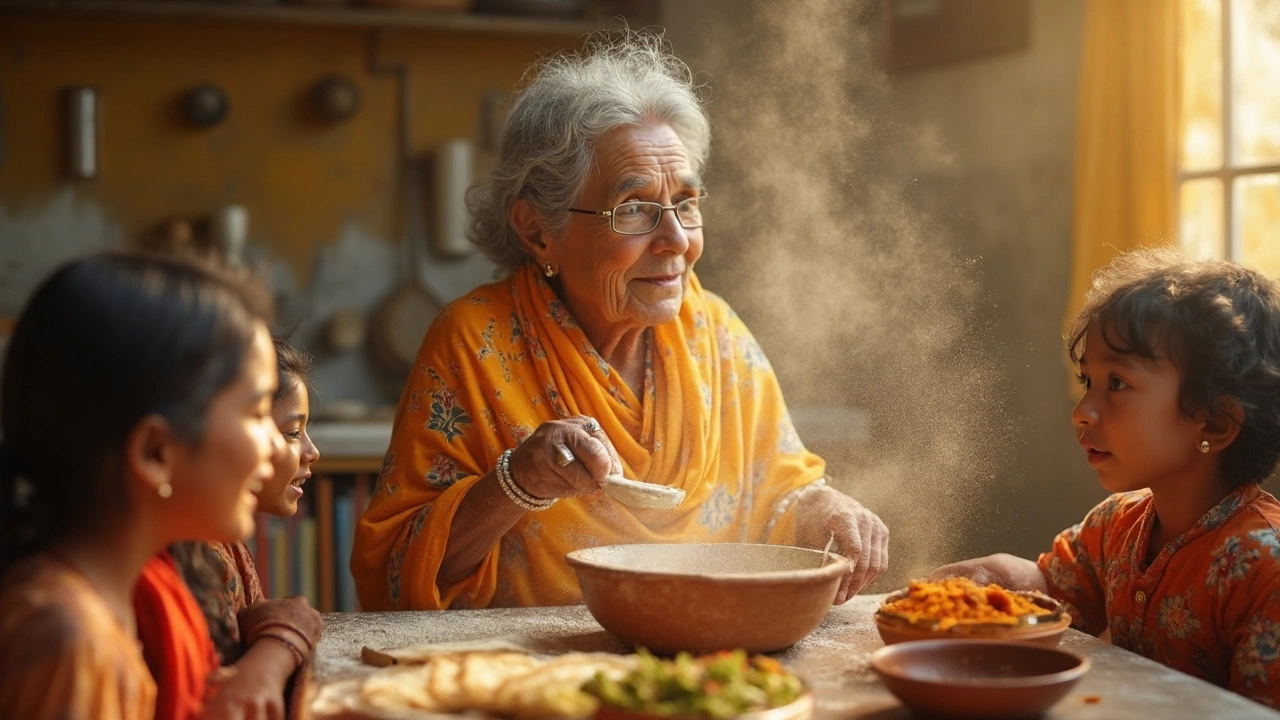Chapatis in a Day – Fast, Fluffy Indian Flatbread Made Simple
When working with Chapatis in a Day, a quick, everyday method for preparing Indian flatbread from whole wheat flour. Also known as chapati, it offers a nutritious staple that pairs well with any curry or dal. Chapatis are a type of Roti, a round, unleavened flatbread common across the Indian subcontinent. This tag page brings together everything you need to master the craft, from dough basics to cooking tricks. Whole Wheat Flour serves as the foundation, while a hot Tawa is the essential cooking surface. In short, Chapatis in a Day encompasses quick dough prep, proper kneading, and the right heat to achieve that satisfying puff.
Why a Good Dough Makes All the Difference
The first step is treating the dough like a living thing. Start with a cup of Whole Wheat Flour for every two cups of water, then add a pinch of salt and a splash of oil. A little oil—about a teaspoon—helps keep the dough soft and prevents it from sticking to the rolling board. Some cooks sprinkle a pinch of baking soda; this tiny amount can lighten the texture without turning the chapati into a cake. Knead the mixture for at least five minutes until it feels smooth and elastic; this builds gluten, which is the key to a chewy yet tender bite. Let the dough rest for 15‑20 minutes. Resting relaxes the gluten strands, making rolling easier and ensuring the chapati puffs evenly on the tawa.
Rolling technique also plays a big role. Dust the surface lightly with flour, then use even pressure to roll the dough into a thin circle—about 6‑7 inches in diameter. Too thick, and the chapati stays doughy; too thin, and it may tear before it hits the heat. Aim for uniform thickness; a consistent shape helps the steam trapped inside expand uniformly, creating the classic puff. If you notice cracks, give the dough a few more minutes of rest. Small adjustments in water content or rolling pressure can prevent these issues before they happen.
Now comes the star of the show: the Tawa. Heat it over medium‑high flame until it’s hot enough that a few drops of water sizzle and evaporate within a second. The right temperature is crucial—if the tawa is too cool, the chapati will dry out; too hot, and it will burn before puffing. Place the rolled dough onto the tawa, let it cook for about 30 seconds until you see tiny bubbles forming, then flip. After the second side shows brown spots, give it a quick press with a cloth or spatula; this sudden burst of steam forces the chapati to puff. The combination of proper dough, consistent rolling, and the hot tawa creates the perfect puff—a hallmark of a well‑made chapati.
Even with the best steps, chapatis sometimes refuse to puff. Common culprits include insufficient kneading, which leaves gluten under‑developed, and using cold water, which hampers gluten formation. Another issue is uneven heat; a tawa that has hot spots will cook one side faster, preventing a uniform puff. Adding a tiny dash of oil to the dough can rescue a dry texture, while a pinch of baking soda can give a subtle lift if the chapati stays flat. Remember, each chapati is a small experiment—adjust the water, flour ratio, or resting time based on how the dough feels. By tweaking one factor at a time, you’ll quickly pinpoint the perfect formula for your kitchen.
Once you’ve nailed the basics, chapatis become a versatile canvas. Try sprinkling nigella seeds or cumin on the dough before cooking for an extra flavor kick. Pair them with a bowl of creamy dal, a tangy vegetable curry, or simply butter and a pinch of salt for a quick snack. Because chapatis are made in a day, you can pull them out for any spontaneous meal, making them a reliable staple that saves time without sacrificing taste. Below you’ll find a curated list of articles that dive deeper into each step—soft roti tips, puffing tricks, oil timing, and even the science behind baking soda in flatbreads—so you can keep improving your chapati game.

How Many Chapatis Should You Eat in a Day? A Guide to Balanced Nutrition
Curious about how many chapatis you should eat daily to maintain a balanced diet? This guide covers the essential factors, like Body Mass Index (BMI) and calorie needs, to help tailor your diet. Learn to use a calorie calculator and discover the caloric content of chapatis to make informed dietary choices. Find out more about the Indian dietary context and legal aspects of nutrition recommendations.